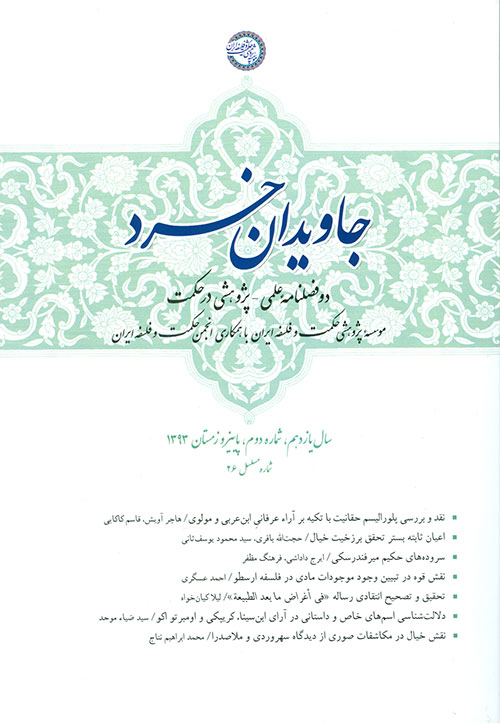Critique of the view of Muslim Logicians on The Import of the Universal Negative Disjunctive Proposition
Keywords:
Conditional proposition, Universal Negative Disjunction, Exclusive Disjunction, Inclusive Disjunction, Incompatible DisjunctionAbstract
Determining the precise contents of discontinuity negation in quantified conditional proposition is one of the disputed topics in traditional logic. Different perceptions of the contents of quantified disjunctive conditional, especially the negative ones, have caused logicians to differ in the discussion of cohesion of hypotheticals as well as arguments composed of disjunctive conditionals and refrain [prevent logicians] from presenting a coherent system for the logic of conditionals. Examining the words of Muslim logicians about the contents of the negative disjunctive proposition indicates the complexity and ambiguity of the meaning of the universal negation disjunctive and consequently the particular affirmative proposition. Their examples for the universal negative disjunctive include cases that exists between two disjunctive parties, which are one of the proposition of equality, absolute generality and peculiarity, and generality and peculiarity in some respect. However, the precise determination of the provisions of the universal negation, where the relationship between absolute generality and peculiarity, and generality and peculiarity in some respect is subject to many problems. In this article, we have analyzed the perception of Muslim logicians about the universal negative antagonistic, the problems of this perception and the solutions provided by the logicians such as Ṣadr al-Shari'a, Yūsuf al-Sanūsī, Aḥmad al-Mallawī, Gelenbevi İsmail Efendi, and Abd al-Karīm Muḥammad Modarres. Then, in order to accurately determine the provisions of the universal negation of disjunctive relation, first the possible relationships between the two events have been identified and displayed in the form of a circle diagram. We can find out with the help of these diagrams, which of the four quantified disjunctive propositions indicate the possible relation between two things and how to interpret the universal and partial antagonistic [adversarial proposition].





